Bullmastiffs are known for their large size, as males weigh around 130 pounds. However, they are also intelligent, kind, confident, and gentle towards those they love. These majestic dogs come in three standard colors: fawn, red, and brindle. However, there are also several mixtures of these three primary colors, like fawn brindle, red brindle, red fawn, and red, fawn, brindle. Below is everything you need to know about bullmastiff colors, from rarest to most common.
Rarest to Most Common Bullmastiff Colors
Organizations like the American Bullmastiff Association and American Kennel Club are responsible for setting standards that all registered breeders need to follow. Their standards pertain to all breeds’ average weight, size, shape, coat color, temperament, and general appearance. According to them, there are three standard colors:
1. Brindle

Some people refer to this coloring as
tiger
stripes, but brindle is more blended and subtle.
©Da Silva Emmanuelle/iStock via Getty Images
British gamekeepers originally bred bullmastiffs to protect estates from poachers, and their preferred color was brindle as they camouflaged so well. However, it is also the rarest bullmastiff color. Brindle is also seen in other animals, like cats, cattle, Guinea pigs, and horses. Some people refer to this coloring as tiger stripes, but brindle is more blended and subtle. Usually, the base forms shades of red, covered by black stripes. But, shading varies as some appear dark brown with light brown stripes. The shading is so subtle that darker brindle dogs appear almost completely black, even though there are stripes and markings.
2. Red
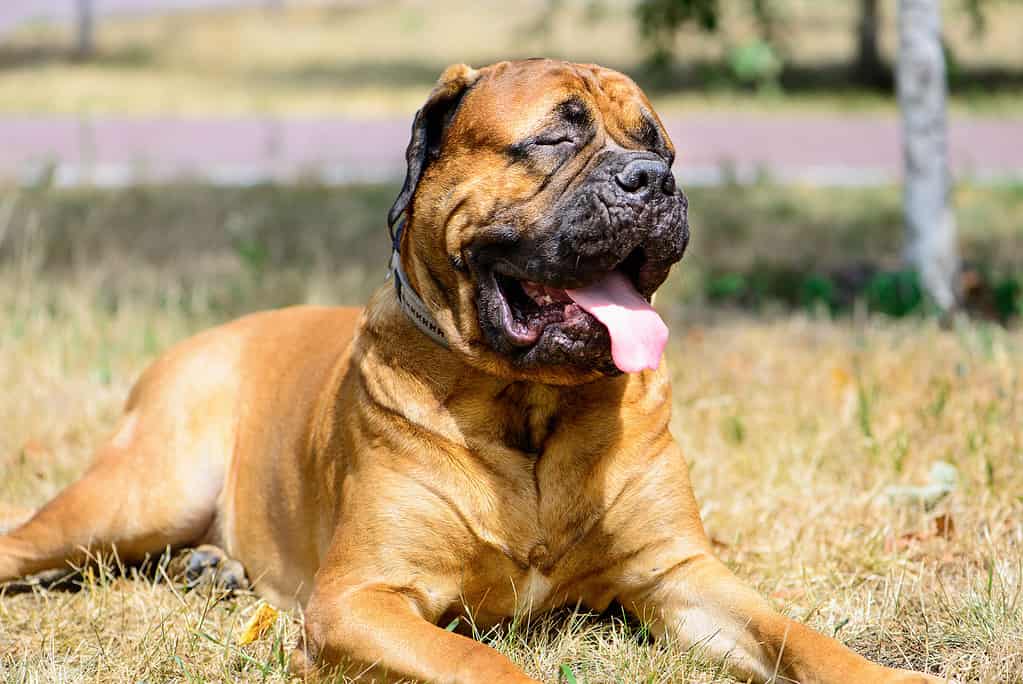
Some red bullmastiffs have a patch of white on their chest, between their forelegs. While this meets the standards of the AKC, the patch can’t be too big, or it’s classified as a fault.
©iStock.com/Astakhova
Bullmastiffs also have red coats, which are fairly common. However, there are different variations of red. For example, some coats have a deep brown coloring, while others are so light it is tough to distinguish from the fawn coat. Some organizations from other countries have added brown as a standard color to make it easier for people to identify. Some red bullmastiffs have a patch of white on their chest, between their forelegs. While this meets the standards of the AKC, the patch can’t be too big, or it’s classified as a fault.
3. Fawn
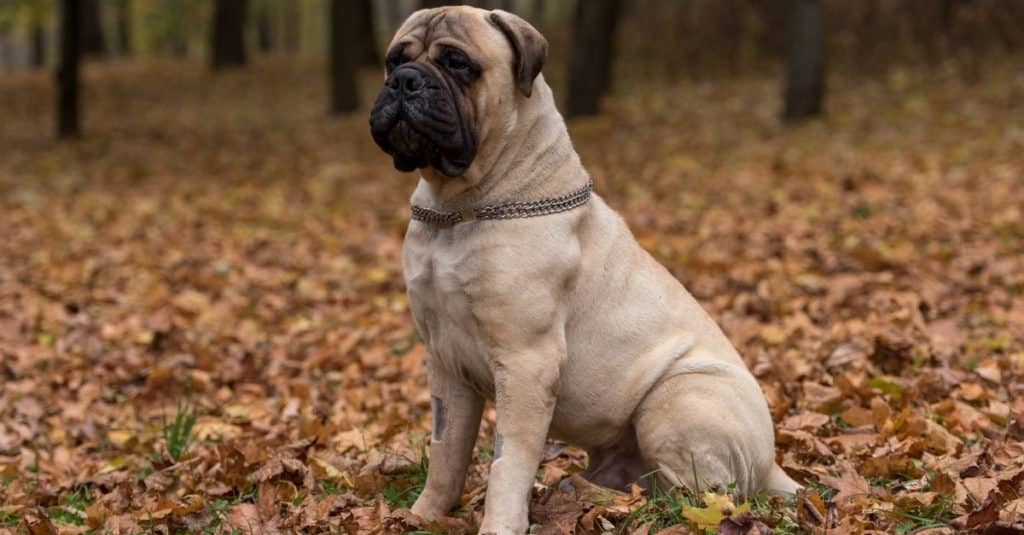
Bullmastiffs with fawn coats are the most common because people like them due to their gentle appearance.
©photosounds/Shutterstock.com
Fawn is the most common bullmastiff color, ranging from light brown to reddish-brown. However, they have different shading on the chest, belly, and legs, creating a beautiful and gentle appearance. Additionally, they have a black mask, which is one of their most popular distinguishing features.
Bullmastiff Puppy Colors
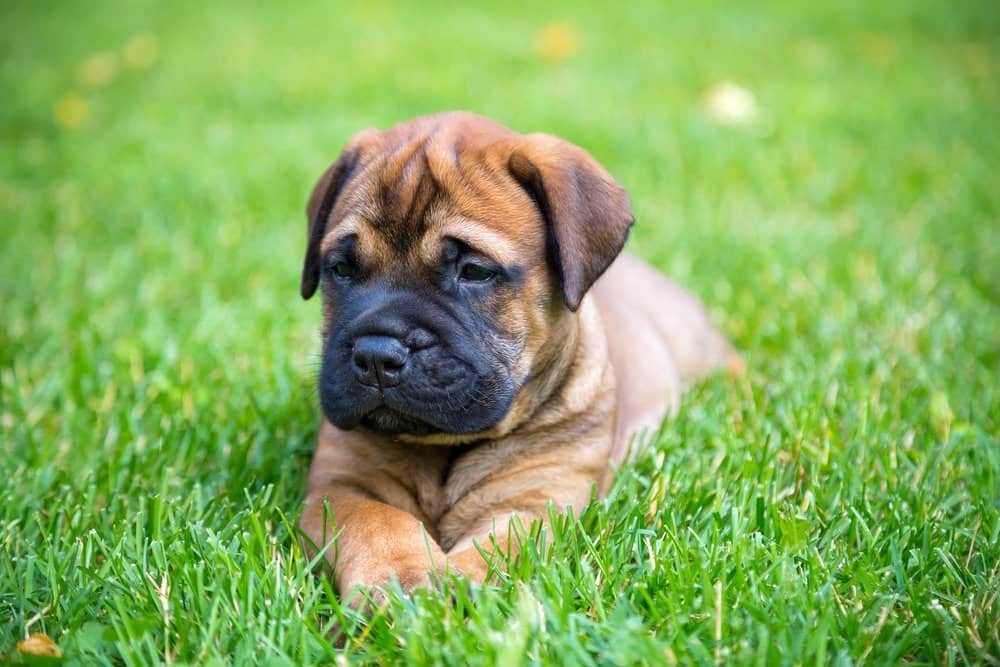
Don’t base your decision on the coat color, as it will likely change as they grow. Instead, choose a Bullmastiff puppy based on their temperament and health.
©Sergey Lavrentev/Shutterstock.com
Bullmastiff puppies are no different than other breeds, as their coat color changes as they grow. For example, a deep red pup could grow up to be light brown or fawn, and vice versa. Furthermore, their markings could fade or become more prominent. Therefore, you shouldn’t select a pup based solely on its coloring. Instead, make your decision based on their temperament and overall health.
Bullmastiffs Coat
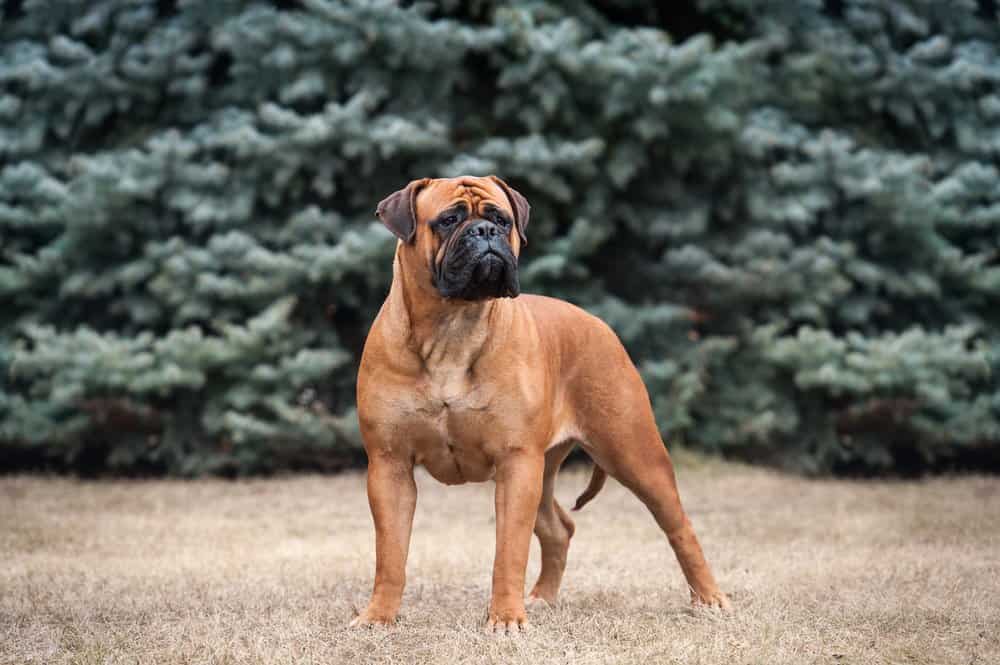
Bullmastiffs are low-maintenance dogs that don’t require a lot of grooming, as they have a single coat with short fur.
©BORINA OLGA/Shutterstock.com
Bullmastiffs have a dense, short, and single coat, meaning there is only one layer of fur. Therefore, they don’t require much grooming, making them a low-maintenance breed and minimal shedders. However, this does not mean you don’t have to brush them. Ensure to give them a good brush at least once a week to keep those short, prickly hairs from getting all over your furniture.
One mistake people make is bathing their dogs too often. They need their natural oils to keep their coats healthy and their skin moisturized, and bathing them too much washes these oils away. Therefore, you should only bathe them when needed.
Are Bullmastiffs Hypoallergenic?
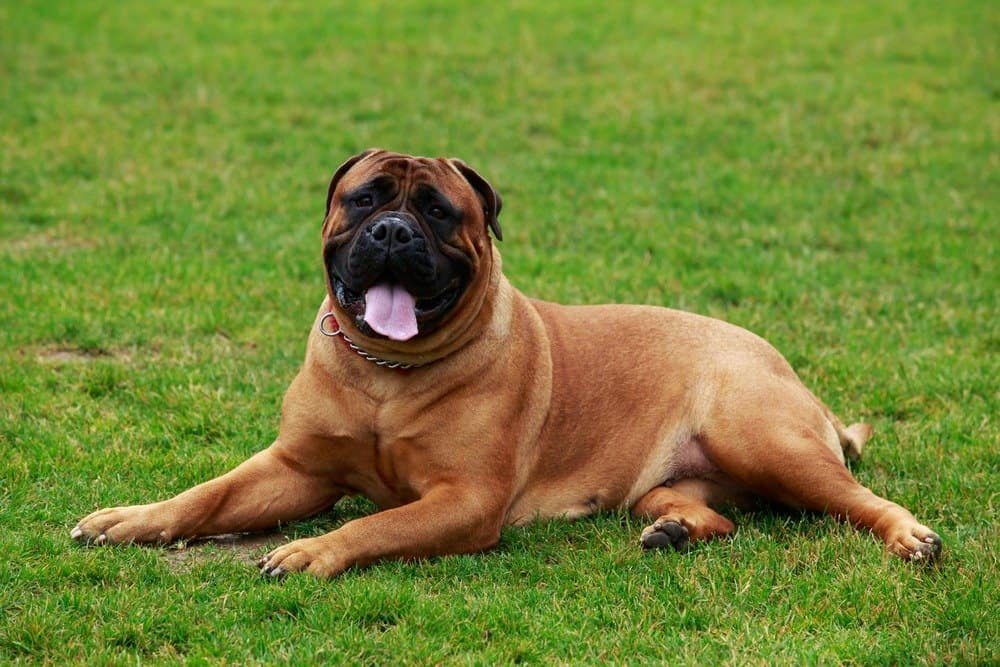
When someone says that a dog is hypoallergenic, it doesn’t mean you won’t have a reaction; it means you are less likely to have an allergic reaction.
©Olga Aniven/Shutterstock.com
No, bullmastiffs are not hypoallergenic, but that does not mean they aren’t good dogs for people with allergies. Unfortunately, there is a lot of misinformation and confusion surrounding the word hypoallergenic, which describes dogs as allergen-free. However, the truth is, there is no such thing. For example, poodles are advertised as hypoallergenic and one of the best breeds for allergy sufferers, but people may still have an allergic reaction around them.
Most dog allergens occur in proteins in dogs’ saliva, urine, and dander. Therefore, when dogs lick their fur, they transfer these proteins onto hair that falls onto your floors and furniture. Furthermore, their dry skin also falls off in your home, which can cause an allergic reaction. So, when someone says that a dog is hypoallergenic, it doesn’t mean you won’t have a reaction; it means you are less likely to have an allergic reaction.
It is best to get tested if you or someone in your home suffers from allergies to find out what triggers it. If the tests show that the allergy is dog-related, then it is best not to get one for your health. However, if it is a mild allergy, there is a chance you can live with a dog, but experiment before jumping in by meeting different “hypoallergenic” breeds.
Are Bullmastiffs Good Family Dogs?
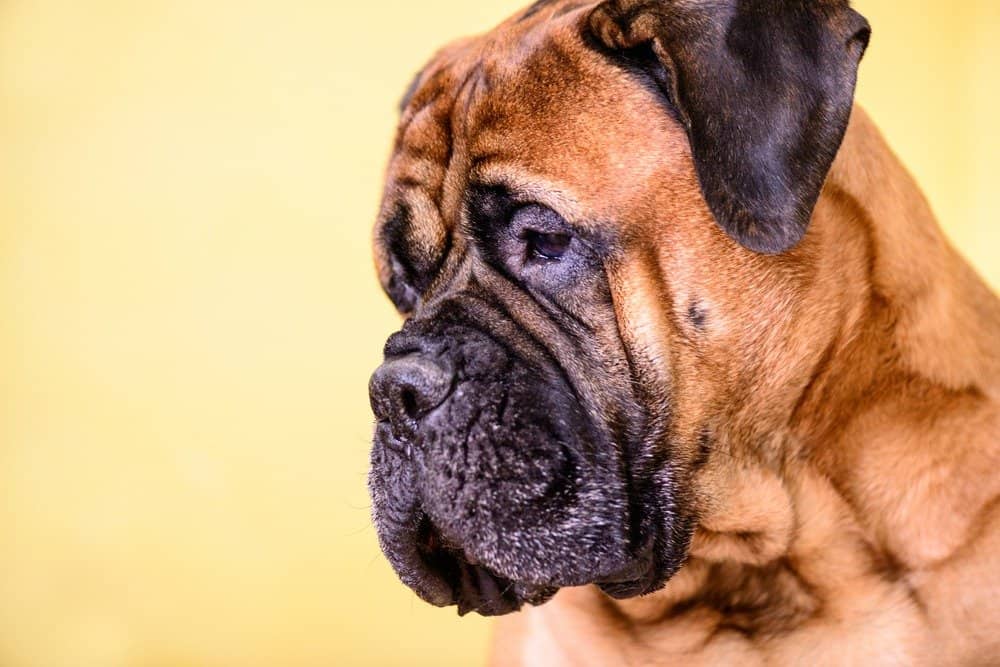
While the bullmastiff is not aggressive towards its family, they are a muscular, powerful breed that can easily knock over small children or injure them in excitement.
©Inna Astakhova/Shutterstock.com
Yes, bullmastiffs are good family dogs. These dogs can weigh up to 130 pounds and grow to 27 inches tall. As a result, many people think they are aggressive and intimidating. However, they are actually quite gentle, loving, and calm. Furthermore, their docile behavior makes them one of the very few large breeds that can thrive in smaller homes and apartments. However, they will require a long walk each day, so hopefully, there is a park nearby. Bullmastiffs need around 30 minutes of exercise daily to ensure they stay healthy and don’t become obese. This can be divided into two or three short walks, one long walk, or time running around in a large, fenced area.
But, when they ask if a breed is good with family, people really want to know whether the dog is aggressive or dangerous. While the bullmastiff is not aggressive towards its family, they are a muscular, powerful breed that can easily knock over small children or injure them in excitement. This is especially true if the bullmastiff is a young adult, as they are exuberant and bounce around a lot. However, once they reach two years old, they start to calm down.
Training a Bullmastiff
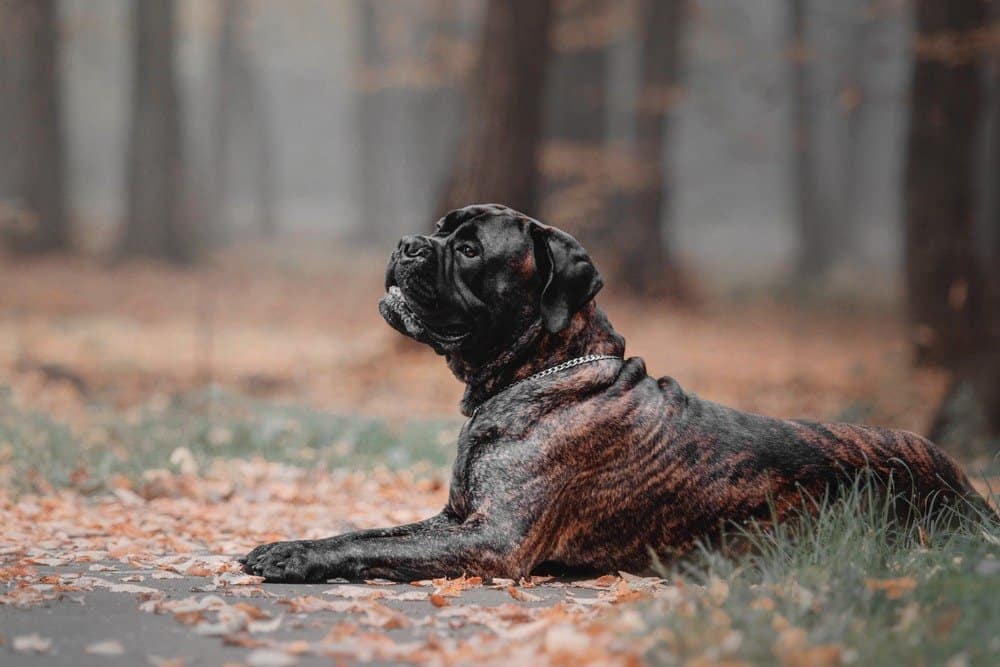
These dogs love learning new commands and usually embrace training. While bullmastiffs are not usually aggressive, they will protect their families if they sense a threat and become very territorial.
©OlgaOvcharenko/Shutterstock.com
Bullmastiffs might be boisterous when they are young, but training helps a lot in this regard. Training your pup is important to their success as a family pet. If you don’t train your bullmastiff, just imagine what all that muscle and power can do if left to its own devices. This is a power breed, and owners must have complete control to avoid accidents. Thankfully, these dogs love learning new commands and usually embrace training. While bullmastiffs are not usually aggressive, they will protect their families if they sense a threat and become very territorial.
The photo featured at the top of this post is © volofin/Shutterstock.com
Ready to discover the top 10 cutest dog breeds in the entire world?
How about the fastest dogs, the largest dogs and those that are -- quite frankly -- just the kindest dogs on the planet? Each day, AZ Animals sends out lists just like this to our thousands of email subscribers. And the best part? It's FREE. Join today by entering your email below.
Thank you for reading! Have some feedback for us? Contact the AZ Animals editorial team.







